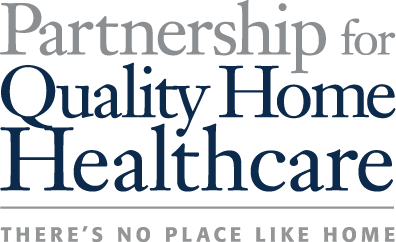May 9, 2013
Home Care Industry Projects Negative Margins, Even Without Rebasing
Posted in: News
Inside Health Policy
The home care industry projects that, even if CMS does not rebase the industry’s pay, home health companies in many states will be losing money on Medicare beneficiaries by 2017. Because Medicare is both the predominant and best payer for home health agencies, which is not the case with other health care sectors, the industry says it cannot offset Medicare losses with private insurance pay. The findings are in a report released Thursday (May 9), which is part of the sector’s efforts to get CMS to factor projections out to 2017 as the agency considers rebasing for the first time in the home health proposed pay rule.
“There is no place for this industry to make up for zero or below margins,” said Billy Tauzin, the former Louisiana Republican chair of the House Energy and Commerce Committee who now represents home health agencies. Tauzin emphasized that industry is proposing to save Medicare $15 billion with its fraud-fighting proposal. Fraud measures in the Affordable Care Act have saved Medicare $11 billion, but the Congressional Budget Office did not give credit for those savings when it scored the ACA, he added. Fighting fraud would hurt only the criminals, he said, and it would remove the “stain” on the sector.
The health reform law authorizes CMS to rebase home health pay between 2014 and 2017, but unlike other sectors, the law does not require rebasing for home health. Rather, it gives CMS the authority to rebase, and industry has pointed that out to CMS officials as they work on the 2014 proposed pay rule for home health, which CMS typically publishes around the end of this month.
Allen Dobson, of the health care economics firm Dobson | DaVanzo that conducted the study, said the analysis is anchored in the conservative 2013 projections from the Medicare Payment Advisory Commission, then extended to 2017, which is the last year in the rebasing window under the health law. Industry used Medicare cost reports and MedPAC’s method of calculating margins so the main difference between the industry study and the data that CMS typically considers is that industry makes projections instead of looking back, he said. The industry study also breaks out profit margins by state instead of considering solely the national average because margins vary significantly among states due to such costs as transportation and cost of living.
Tauzin said savings projections from the Affordable Care Act already have been met, before the rebasing even begins, because other pay cuts have caused the change intended by rebasing. Legislative pay cuts — the outlier cut, market basket cuts, productivity cut and sequestration — save Medicare $24.9 billion between 2011 and 2020, and regulatory cuts — the 10 percent outlier limit that began in 2010 and case-mix cuts since 2009 — save $47.6 billion. That $72.5 billion in home health savings equals a 22 percent pay cut, the report states.
Tauzin said the brand drug industry, which he represented as president of the Pharmaceutical Research and Manufacturers of America during the health reform debate, paid about $90 billion, but the drug industry is much larger than the home health industry.
If CMS does not rebase pay, home health agencies in 40 percent of states will still either have narrow or negative margins. Nine states would have margins below 0.5 percent and 10 states would have negative margins.
Given that Medicare accounts for more than 80 percent of home health business and that the other 20 percent pays worse than Medicare, if Medicare cuts continue, home health firms will have to either close or the quality of care will diminish, Tauzin said.
“That’s the last thing we should forced on this industry,” he said.
